Inactivation of the Kv2.1 channel through electromechanical coupling
- PMID: 37758949
- PMCID: PMC10567553
- DOI: 10.1038/s41586-023-06582-8
Inactivation of the Kv2.1 channel through electromechanical coupling
Abstract
The Kv2.1 voltage-activated potassium (Kv) channel is a prominent delayed-rectifier Kv channel in the mammalian central nervous system, where its mechanisms of activation and inactivation are critical for regulating intrinsic neuronal excitability1,2. Here we present structures of the Kv2.1 channel in a lipid environment using cryo-electron microscopy to provide a framework for exploring its functional mechanisms and how mutations causing epileptic encephalopathies3-7 alter channel activity. By studying a series of disease-causing mutations, we identified one that illuminates a hydrophobic coupling nexus near the internal end of the pore that is critical for inactivation. Both functional and structural studies reveal that inactivation in Kv2.1 results from dynamic alterations in electromechanical coupling to reposition pore-lining S6 helices and close the internal pore. Consideration of these findings along with available structures for other Kv channels, as well as voltage-activated sodium and calcium channels, suggests that related mechanisms of inactivation are conserved in voltage-activated cation channels and likely to be engaged by widely used therapeutics to achieve state-dependent regulation of channel activity.
© 2023. This is a U.S. Government work and not under copyright protection in the US; foreign copyright protection may apply.
Conflict of interest statement
The authors declare no competing interests.
Figures



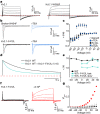

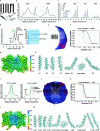

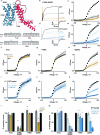

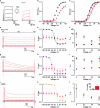
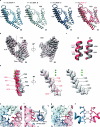


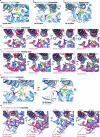

Similar articles
-
A novel epileptic encephalopathy mutation in KCNB1 disrupts Kv2.1 ion selectivity, expression, and localization.J Gen Physiol. 2015 Nov;146(5):399-410. doi: 10.1085/jgp.201511444. J Gen Physiol. 2015. PMID: 26503721 Free PMC article.
-
The Kv2.1 C terminus can autonomously transfer Kv2.1-like phosphorylation-dependent localization, voltage-dependent gating, and muscarinic modulation to diverse Kv channels.J Neurosci. 2006 Jan 11;26(2):685-95. doi: 10.1523/JNEUROSCI.4620-05.2006. J Neurosci. 2006. PMID: 16407566 Free PMC article.
-
Regulation of intrinsic excitability in hippocampal neurons by activity-dependent modulation of the KV2.1 potassium channel.Channels (Austin). 2009 Jan-Feb;3(1):46-56. doi: 10.4161/chan.3.1.7655. Channels (Austin). 2009. PMID: 19276663 Free PMC article.
-
Dynamic regulation of the voltage-gated Kv2.1 potassium channel by multisite phosphorylation.Biochem Soc Trans. 2007 Nov;35(Pt 5):1064-8. doi: 10.1042/BST0351064. Biochem Soc Trans. 2007. PMID: 17956280 Review.
-
Kv2.1: a voltage-gated k+ channel critical to dynamic control of neuronal excitability.Neurotoxicology. 2005 Oct;26(5):743-52. doi: 10.1016/j.neuro.2005.02.003. Epub 2005 Jun 9. Neurotoxicology. 2005. PMID: 15950285 Review.
Cited by
-
Worldwide Sodium Channel Conference, January 31st-February 2nd, 2024, Grindelwald, Switzerland.Bioelectricity. 2024 Dec 13;6(4):288-291. doi: 10.1089/bioe.2024.0025. eCollection 2024 Dec. Bioelectricity. 2024. PMID: 39712211
-
A broad survey of choanoflagellates revises the evolutionary history of the Shaker family of voltage-gated K+ channels in animals.Proc Natl Acad Sci U S A. 2024 Jul 23;121(30):e2407461121. doi: 10.1073/pnas.2407461121. Epub 2024 Jul 17. Proc Natl Acad Sci U S A. 2024. PMID: 39018191 Free PMC article.
-
Dilation of ion selectivity filters in cation channels.Trends Biochem Sci. 2024 May;49(5):417-430. doi: 10.1016/j.tibs.2024.02.004. Epub 2024 Mar 20. Trends Biochem Sci. 2024. PMID: 38514273 Free PMC article. Review.
-
Small molecule inhibits KCNQ channels with a non-blocking mechanism.Nat Chem Biol. 2025 Jul;21(7):1100-1109. doi: 10.1038/s41589-024-01834-8. Epub 2025 Jan 15. Nat Chem Biol. 2025. PMID: 39814994
-
Functional control of heteromeric Kv2.1/6.4 channels by the voltage sensor domain of the silent Kv6.4 subunit.J Physiol. 2025 Jun;603(12):3519-3532. doi: 10.1113/JP288376. Epub 2025 Jun 5. J Physiol. 2025. PMID: 40471226 Free PMC article.
References
MeSH terms
Substances
Grants and funding
LinkOut - more resources
Full Text Sources
Molecular Biology Databases

